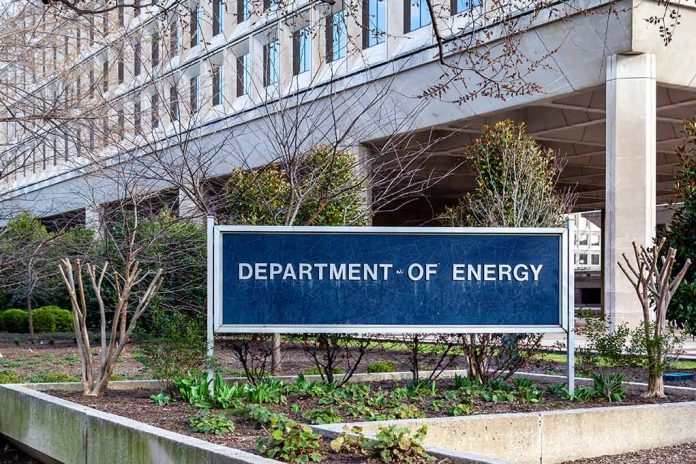
Congress gifts energy lobbyists a staggering $2 trillion in subsidies over three years despite warnings that the money will increase the deficit and fail to reduce emissions as promised.
Key Takeaways
- The House-passed bill extends Trump’s 2017 tax cuts while phasing out green energy subsidies from the Inflation Reduction Act by 2028, potentially raising $515 billion in revenue
- The legislation is expected to add $2.3 trillion to the national deficit, continuing the pattern of irresponsible government spending
- Originally projected to cost $271 billion over 10 years, the Inflation Reduction Act’s price tag has ballooned to $1.2 trillion, with the Cato Institute estimating it could reach $4.67 trillion by 2050
- Wealthy households and large corporations, not average Americans, have been the primary beneficiaries of the IRA’s tax credits
- The IRA has significantly underperformed in its stated goal of reducing greenhouse gas emissions, raising questions about the effectiveness of massive government subsidies
Trillion-Dollar Energy Handouts Add to National Debt
The House of Representatives has approved a massive domestic policy bill that extends President Trump’s successful 2017 tax cuts while creating a three-year window for energy lobbyists to secure up to $2 trillion in subsidies. While the legislation includes positive elements like increased funding for immigration enforcement and defense, fiscal conservatives are rightly concerned about the bill’s projected $2.3 trillion addition to the national deficit. This latest spending spree comes as Americans continue to struggle with inflation caused by the previous administration’s reckless money printing and demonstrates Congress’s ongoing addiction to spending taxpayer dollars with little accountability.
“Subsidy-dependent industries don’t need a long offramp; they need a clear signal that the taxpayer-funded gravy train is over,” said Adam Michel and Joshua L. Loucks, fiscal policy experts.
The legislation accelerates the phaseout of green energy subsidies from the misnamed Inflation Reduction Act (IRA), with tax credits for clean electricity ending by 2028, while nuclear power tax credits remain until 2031. This approach reflects a more balanced energy policy under the Trump administration, which recognizes the importance of reliable energy sources rather than solely focusing on unproven green technologies. However, the sheer scale of the subsidies available during the three-year window raises serious questions about whether taxpayers are getting value for their money or simply funding another government boondoggle.
Green Energy Subsidies: Ballooning Costs, Minimal Results
The Biden-era Inflation Reduction Act, signed in 2022, has been a colossal failure by almost any measure. Initially projected to cost $271 billion over 10 years, updated estimates now place the price tag at $1.2 trillion – more than four times the original figure. Even more alarming, the Cato Institute estimates these subsidies could cost nearly $2 trillion by 2034 and a staggering $4.67 trillion by 2050 if left unchecked. These projections reveal the true fiscal impact of progressive climate policies that were sold to the American people under pretenses about both their costs and effectiveness.
“I don’t think you could throw that much money at industry and have nothing happen, but the latest emission data shows a lot less [emission reduction] than the initially projected benefit,” said Philip Rossetti, climate policy expert.
Perhaps most damning is that despite the astronomical spending, the IRA has dramatically underperformed in reducing greenhouse gas emissions – supposedly its primary purpose. This failure exposes what many conservatives have long suspected: these massive spending packages are less about environmental protection and more about wealth redistribution and rewarding political allies. Meanwhile, hardworking Americans see little benefit while continuing to face high energy prices and economic uncertainty resulting from these misguided policies.
Wealthy Elites and Corporations Reap the Benefits
Further proving that progressive climate policies are designed to benefit coastal elites rather than average Americans, wealthy households and large corporations have emerged as the primary beneficiaries of the IRA’s tax credits. While middle-class families struggle to make ends meet due to persistent inflation caused by excessive government spending, the well-connected and affluent are capitalizing on generous tax breaks for luxury electric vehicles and solar installations. This regressive outcome is the exact opposite of what Democrats claimed when passing the legislation, yet it follows the familiar pattern of leftist policies that harm the working class while enriching donors and special interests.
The House bill’s passage represents the closest Congress has come to a full repeal of the IRA, with ongoing debates in the Senate. Some establishment Republicans are advocating for a “targeted” approach to IRA reform, while others question whether the House’s cuts to green energy tax credits will be effective. What’s clear is that the current system of massive energy subsidies is fiscally unsustainable and fundamentally unfair to taxpayers. President Trump’s administration faces the challenge of bringing fiscal sanity back to Washington while ensuring America maintains its energy independence and security without breaking the bank.







